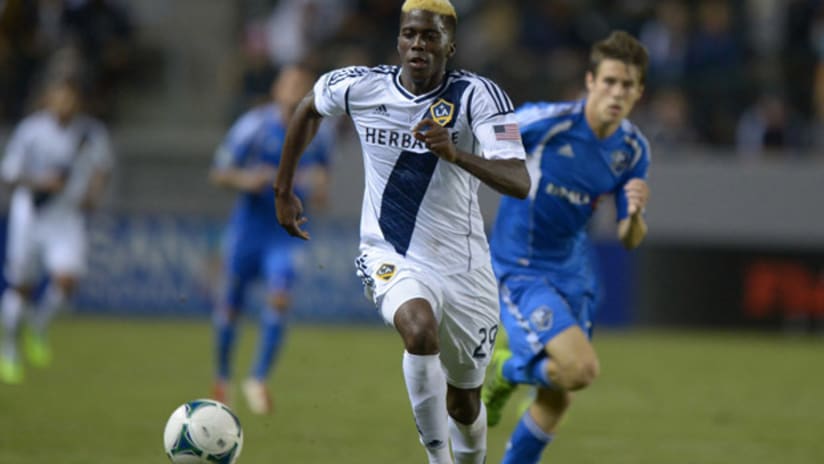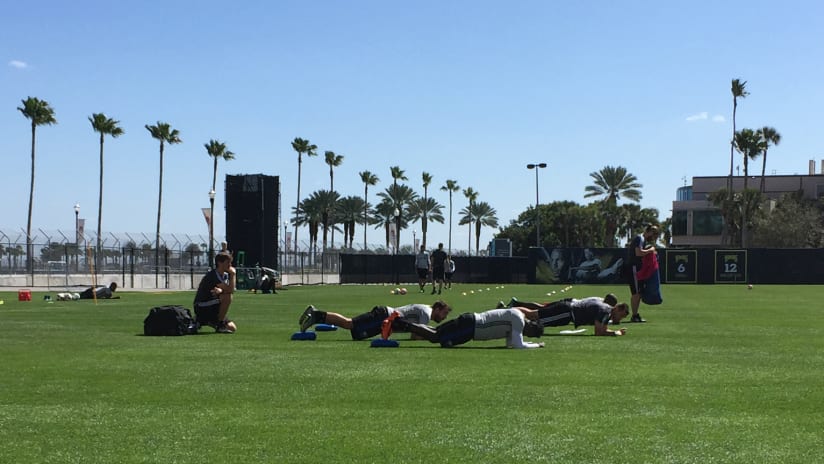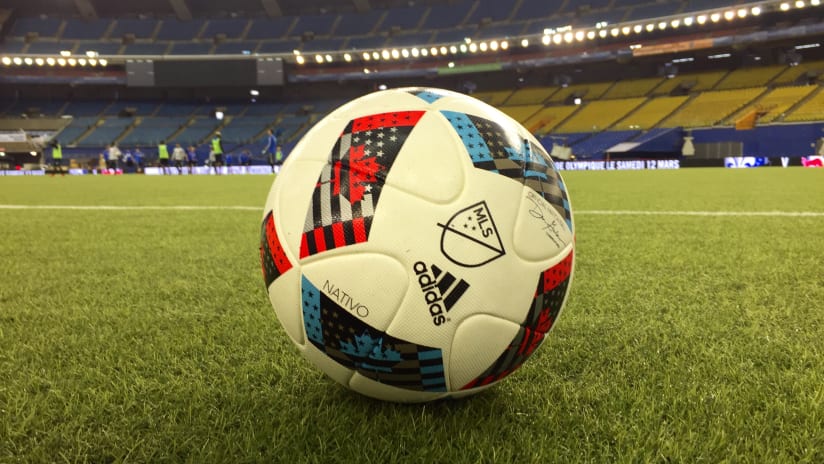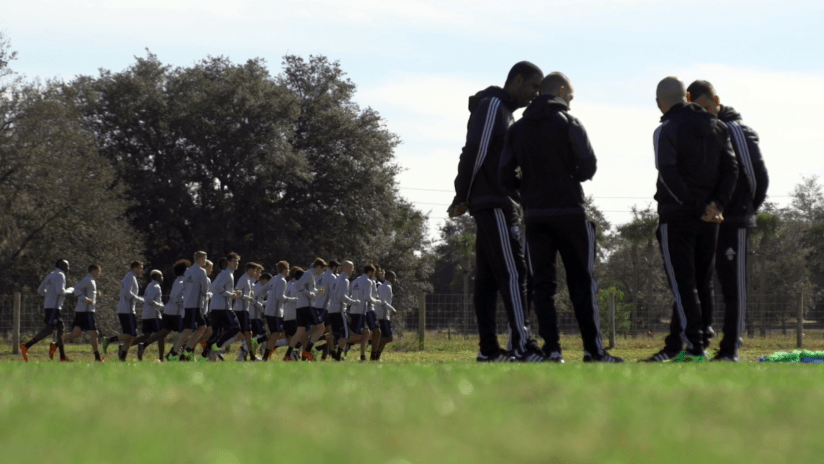Head Coach: Bruce Arena
Formation: 4-4-2
Last 5 results
Win: 3-4 at Colorado Rapids (August 20)
Win: 2-0 vs Vancouver Whitecaps (August 23)
Win: 4-1 vs D.C. United (August 27)
Win: 0-3 at Chivas USA (August 31)
Win: 6-0 vs Colorado Rapids (September 5)
Offensive organization
The Los Angeles Galaxy is a side whose attacks are primarily based off patient build-ups through the middle leading to combinations with strikers to penetrate into the final third. In the Galaxy’s 4-4-2 system, the team circulates the ball from side to side in the middle third of the pitch until a wide player, usually Landon Donovan, dribbles or makes a pass inside the opponent’s defensive block and looks to combine with a striker.
The Galaxy’s way of getting into the final third is effective. The type of combinations the midfielders use with the strikers, short little give-and-go balls to eliminate defenders one at a time. It’s a basic version of tika-taka, which leads to many through balls inside the box, ultimately leading to chances and goals like this one against Chivas USA.
Offensive transition
The Galaxy’s offensive transitions are on and off. Sometimes the team looks sharp and creates a scoring chance shortly after regaining possession and at other times seems slow and disjointed. In some matches, the Galaxy pressed high and won back many balls. They then changed the point of attack and got numbers up the pitch, which created problems for the opposing team. When they win balls in their own half, they do not look for a long ball, but will patiently build their attack with short passes up the pitch.
Defensive organization
The Galaxy displayed two different ways of defending recently. Against D.C. United on August 27, Los Angeles pressed extremely high and forced D.C. United to turn over balls quite often. Strikers Gyasi Zardes and Alan Gordon immediately pressed the centre backs when they had the ball. As soon as that centre back made a pass towards a centre midfielder, the entire Galaxy midfield would step up and deny D.C. United players from turning and playing forward. This forced D.C. to commit many turnovers. However, against Chivas USA on August 31, only the strikers pressed high. The midfielders never stepped up allowing Chivas to easily find a way out of their zone.
Defensive transition
Upon losing the ball, the Galaxy is a team that quickly tries to win it back by applying lots of pressure. If teams don’t play quick and organized against them, the Galaxy will pounce and win back the ball. If opposing teams are organized and play the ball out of pressure quickly, then there are chances for a counter-attack. This is because the Galaxy commit many numbers forward.




